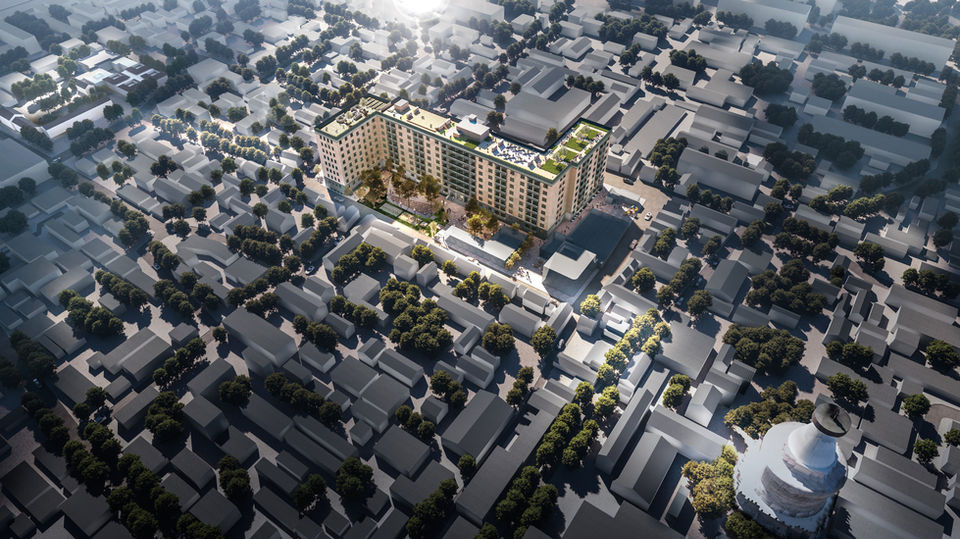K.Z. INNOHUB

Fusuijing Community Revitalization
Beijing, China (2021)
"Research on ‘place’ is to study the relationship between space and event.
Space is not the background of activities, but the inner nature of these activities."

(Firgue 1, Project site analysis diagram designed with LOD Design Strategy, 2021)
Spacetime is used as a framework to analyze the relationship between people/time/space/activity.
People can be defined with personas into different user groups and each generates their own user pattern from their respective timeline.
Space used can be mapped accordingly and activity can be the result of the relationship between people/time/space.
Place Re-Making Framework Design
地方再生架构设计
Placemaking is turning threat into an opportunity
地方再生将威胁转化为机会

1. Activities of people can be sorted based on user groups
混居形态下建立社区凝聚力

2. Activities of people can be sorted based on user groups
鼓励社会力量参与与本地居民共建社区新模式

3. Activities of people can be sorted based on user groups
探索福绥境大楼与社区相互阅读的新角度

Community cultrual connections
在地文化旅程图



Experience Matrix Planning
体验矩阵场景规划
People/Time/Space/Activity
人 / 时/ 场 / 景

(Firgue 2, Life Matrix diagram designed with LOD Design Strategy, 2021)
The proposal purposed a place remaking strategy based on spacetime theory which is used as a framework to analyze the relationship between people/time/space/activity. Community scenarios are systematically organised by people's behavior and demands, it is summarised within 3 types of daily activities.

(Firgue 3, People time space activity design tool created with LOD Design Strategy, 2021)
People can be defined with personas into different user groups and each generates their own user pattern from their respective timeline.
Space used can be mapped accordingly and activity can be the result of the relationship between people/time/space.

(Firgue 4, Design Tool created with LOD Design Strategy, 2021)

Based on different users’ personas and patterns, their activities are arranged according to daily and weekly timelines.
Space for necessary activities such as laundry and social kitchen would be used daily and optional activities such as entertainment would be more popular in users’ free time.

(Firgue 5, Design Tool created with LOD Design Strategy, 2021)
Activity Scenario Design
活 动 场 景 设 计
Space proposed in the building can also be sorted into three types according to different activities and time as NECESSARY, OPTIONAL and SOCIAL.

(Firgue 6, Design Tool created with LOD Design Strategy, 2021)
How does consumer activity scenarios connect with spatial design?
用户活动场景如何与空间设计相连接?

(Firgue 7, Design Tool created with LOD Design Strategy, 2021)
Activities of people can be sorted based on user groups
根据用户群体的生活场景需求进行活动类别分类

(Firgue 8, Design Tool created with LOD Design Strategy, 2021)
Activities of people can be sorted into three types, necessary activities that take place regardless of the quality of the physical environment, such as daily work and housework;
Optional activities that depend on a significant degree of spatial quality, such as going for a walk, sightseeing;
Social activities is the result of the quality and length of the other types of activities because it occurs spontaneously when people meet in a particular place, such as conversation and greetings.

(Firgue 9, Design Tool created with LOD Design Strategy, 2021)






